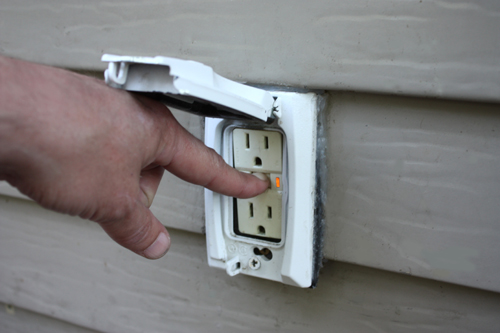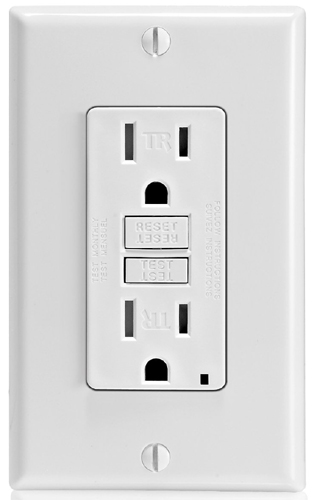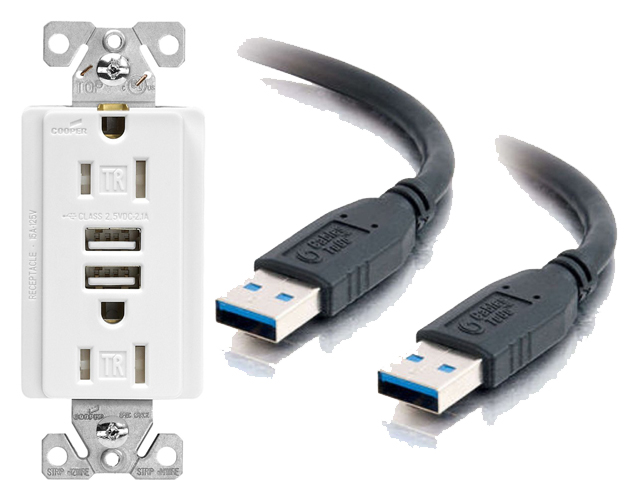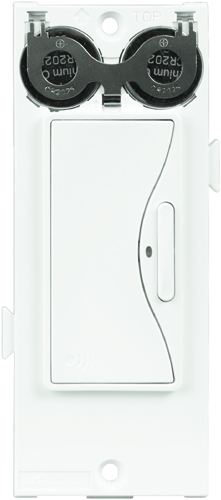A Ground Fault Circuit Interrupter (GFCI) is a type of electrical outlet that helps protect people from shocks due to hazardous ground faults. Ground faults occur when an electrical current “leaks” or follows an unsafe path instead of following its normal safe path. When a ground fault occurs and electricity from an appliance passes through the person’s body, the resulting shock can cause serious injury or even death. GFCIs detect when current is leaking from an electrical circuit to ground and automatically shut off the power at the receptacle in a fraction of a second.
GFCIs not only protect what’s plugged into them, but also provide feed-through protection to ordinary outlets wired downstream (other outlets on the same circuit). The UL Standard has been recently updated to require that GFCIs be self-testing, which incorporates an auto-monitoring feature into the GFCIs, beginning in mid-2015.
Outdoor GFCIs
Make sure all outdoor receptacles, including those around pools, decks and patios, are protected by GFCIs with a weatherproof cover. Make sure pool pumps, hot tubs and any appliances you use outdoors are plugged into GFCI-protected outlets.
Indoor GFCIs
Kitchens, bathrooms, laundry rooms, or any other place around the house that has a water source within six feet of the receptacle needs GFCI protection. Remember: Water and electricity are a potentially deadly combination. Keep appliances like radios or hair dryers away from sinks, tubs and pools.
GFCIs sold today should offer greater protection by automatically blocking the reset button (ensuring that no power is available) if they are improperly wired. With both newer and older models, it is important to periodically test (according to the manufacturer’s instructions) your installed GFCIs to make sure they’re still working properly.
Testing a GFCI is Easy
- Plug a nightlight or lamp into the GFCI.
- Turn the light on and push the TEST button on the GFCI. The GFCI should trip and the light should go off.
- Press the RESET button. The GFCI should reset and the light should come back on.
- If the light either does not go off when the TEST button is pressed or does not come back on when the RESET button is pressed, the device is malfunctioning and should be replaced at once.
USB Receptacles
Offering a simple solution to charge a wide range of electronic devices, new duplex electrical receptacles often come equipped with a USB interface. Increasingly popular in homes and businesses, they replace the standard AC duplex receptacle and eliminate the need for bulky adapters by including two integrated USB charging ports rated at 2.1A. The new receptacles make it easy to quickly charge virtually any applicable electronic component including tablets, smart phones, e-readers, mp3 players, cameras and more.
Wireless Switches
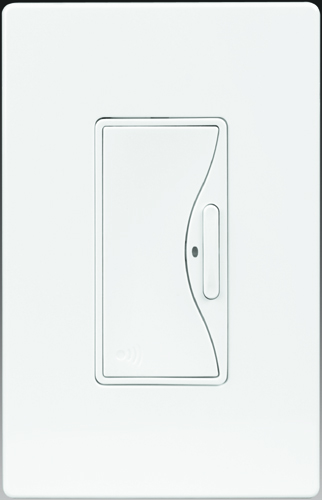
Left: Wireless switch with wall plate; Right: no plate
Another new home electrical trend is the growing popularity of wireless switches. These battery-powered switches control the new home lighting options that are controlled by radio frequency. The advantage is that you can place the light switch anywhere in the home without the need to wire it into the electrical system, which saves a lot of time and work. Mount it to any wall surface or even hold the device in your hand. Some of the new switches can wirelessly control up to five light sources simultaneously from anywhere in the home. Once the switch is installed, it searches for installable devices and ultimately synchronizes itself with them, granting remote control capability. Using Z-wave wireless technology, the switch operates on a dedicated radio frequency so it does not interfere with Wi-Fi or other wireless communications in the house.



